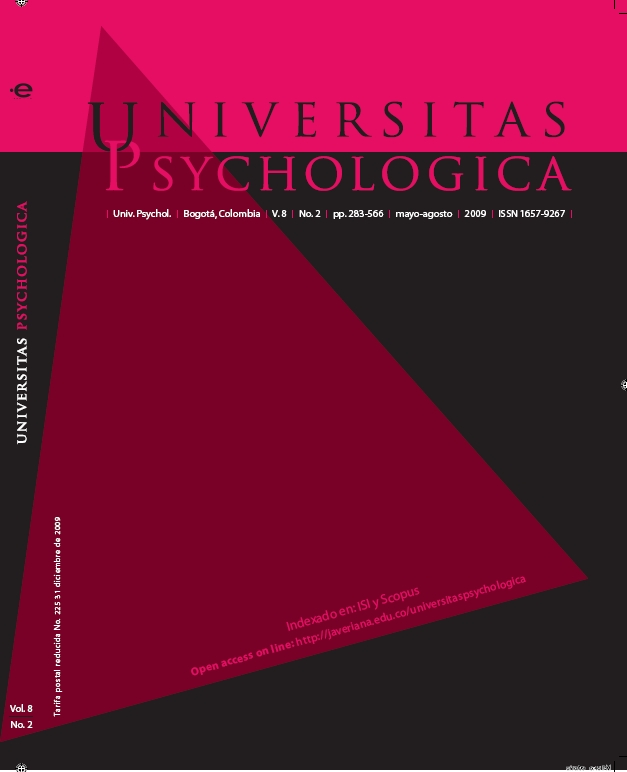Abstract
This paper investigates cohesion (emotional bonding) and hierarchy (power structure) in families with abuse against their children. Twenty low-income families participated. Father, mother and child’s perspective of family relations (cohesion and hierarchy) were evaluated by the Family System Test (FAST). The relationship between father-child, mother-child, couple, and among siblings were evaluated at typical and conflictive situations. Results show a significance regarding to cohesion in typical and conflictive situation for father-child and mother-child dyads in all perspectives (by father, mother, and child). There is no significant differences regarding to hierarchy. These results suggest that the families see the intrafamilial violence as a constant, since they cannot differentiate between both situationsThis journal is registered under a Creative Commons Attribution 4.0 International Public License. Thus, this work may be reproduced, distributed, and publicly shared in digital format, as long as the names of the authors and Pontificia Universidad Javeriana are acknowledged. Others are allowed to quote, adapt, transform, auto-archive, republish, and create based on this material, for any purpose (even commercial ones), provided the authorship is duly acknowledged, a link to the original work is provided, and it is specified if changes have been made. Pontificia Universidad Javeriana does not hold the rights of published works and the authors are solely responsible for the contents of their works; they keep the moral, intellectual, privacy, and publicity rights. Approving the intervention of the work (review, copy-editing, translation, layout) and the following outreach, are granted through an use license and not through an assignment of rights. This means the journal and Pontificia Universidad Javeriana cannot be held responsible for any ethical malpractice by the authors. As a consequence of the protection granted by the use license, the journal is not required to publish recantations or modify information already published, unless the errata stems from the editorial management process. Publishing contents in this journal does not generate royalties for contributors.


